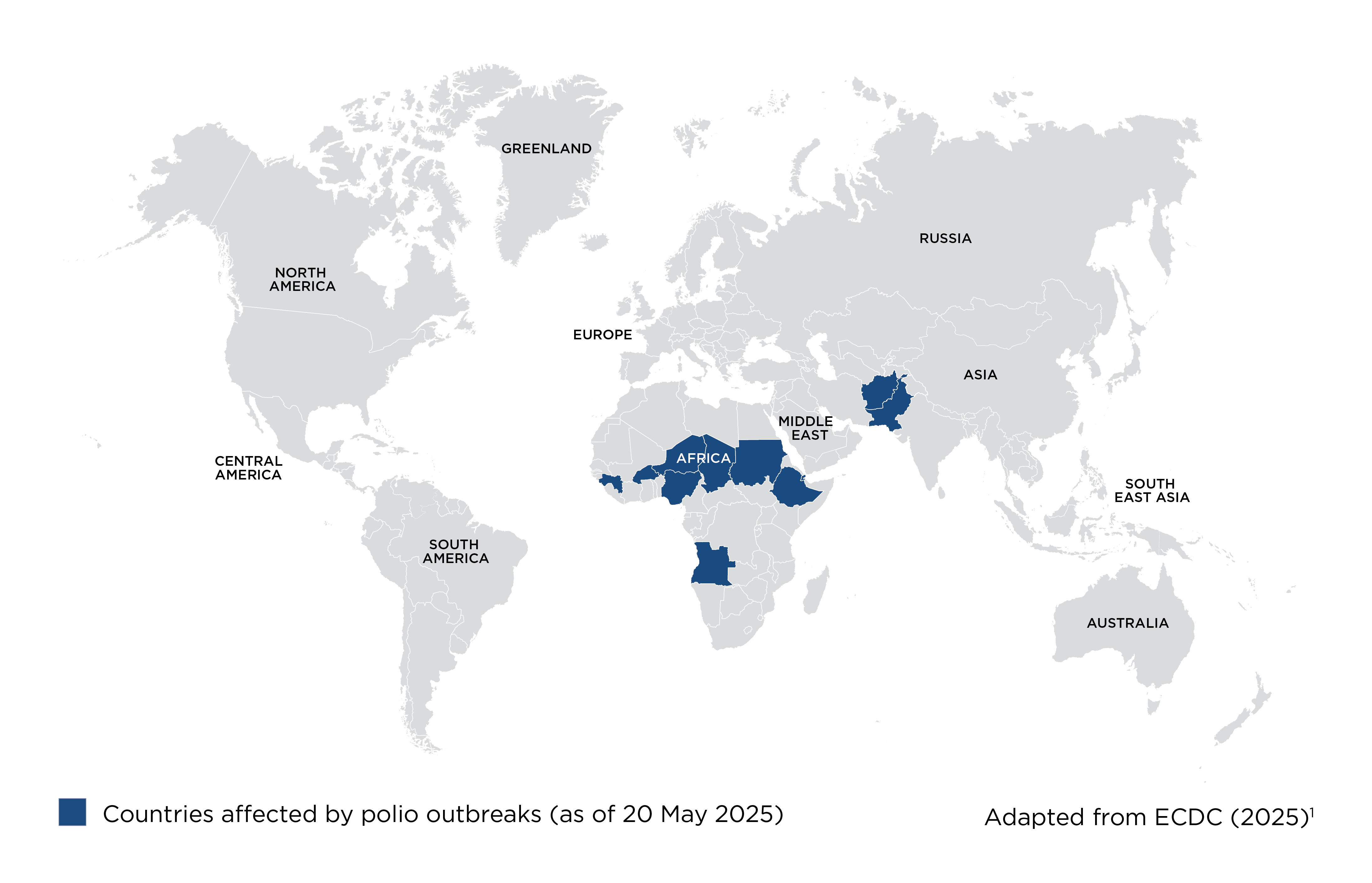The worldwide vaccination campaign has led to an over 99% reduction in wild polio cases since 1988.2
Risk areas for Polio

FAQs
-
Key fact
-
How do you get polio?
The polio virus lives in the intestine and spreads from person to person through coming into contact with the faeces of someone who has the infection. Eating food or drinking water contaminated by the faeces of someone who has polio can also transmit the disease.2 Although less common, it can also spread through coughs or sneezes.3
-
Which countries are affected by polio?
Most countries are now free of polio (see map). The risk of polio is greatest in Afghanistan and Pakistan. Certain other countries are also affected.1,2
-
What are the symptoms of polio?
Most people will not experience any symptoms. Those who do may get flu-like symptoms for up to 10 days, including fever, fatigue, headache, vomiting, stiffness of the neck and muscle pain.3
-
How serious is polio?
Polio can be fatal and cannot be treated. Severe polio causes paralysis in 1 in 200 people, mainly of the legs and sometimes of the muscles used to breathe.2
-
Can I prevent getting polio?
You can take the following precautions to help reduce your risk of infection:
- Visit your nearest convenient pharmacy or specialist travel health clinic for a risk assessment before your trip
- Practice good hygiene and ensure you have access to clean water.4
Ready to get started? Check now for your nearest travel health clinic.
Get friendly advice from the UK's largest network of travel clinics*.
* This list is not exhaustive and other travel health providers are available.
References
- European Centre for Disease Prevention and Control. Polio cases worldwide. May 2025. Available online: https://gis.ecdc.europa.eu/portal/apps/dashboards/fc1d8b9f4a8740808935600db9a96057 (Last accessed May 2025)
- World Health Organization. Factsheet. Poliomyelitis. April 2025. Available online: https://www.who.int/en/news-room/fact-sheets/detail/poliomyelitis (Last accessed May 2025)
- NHS. Conditions A to Z. Polio. September 2022. Available online: https://www.nhs.uk/conditions/polio/ (Last accessed May 2025).
- European Centre for Disease Prevention and Control. Disease factsheet about poliomyelitis. November 2023. Available online: https://www.ecdc.europa.eu/en/poliomyelitis/facts (Last accessed May 2025)
UK-BOTB-2500035 May 2025
